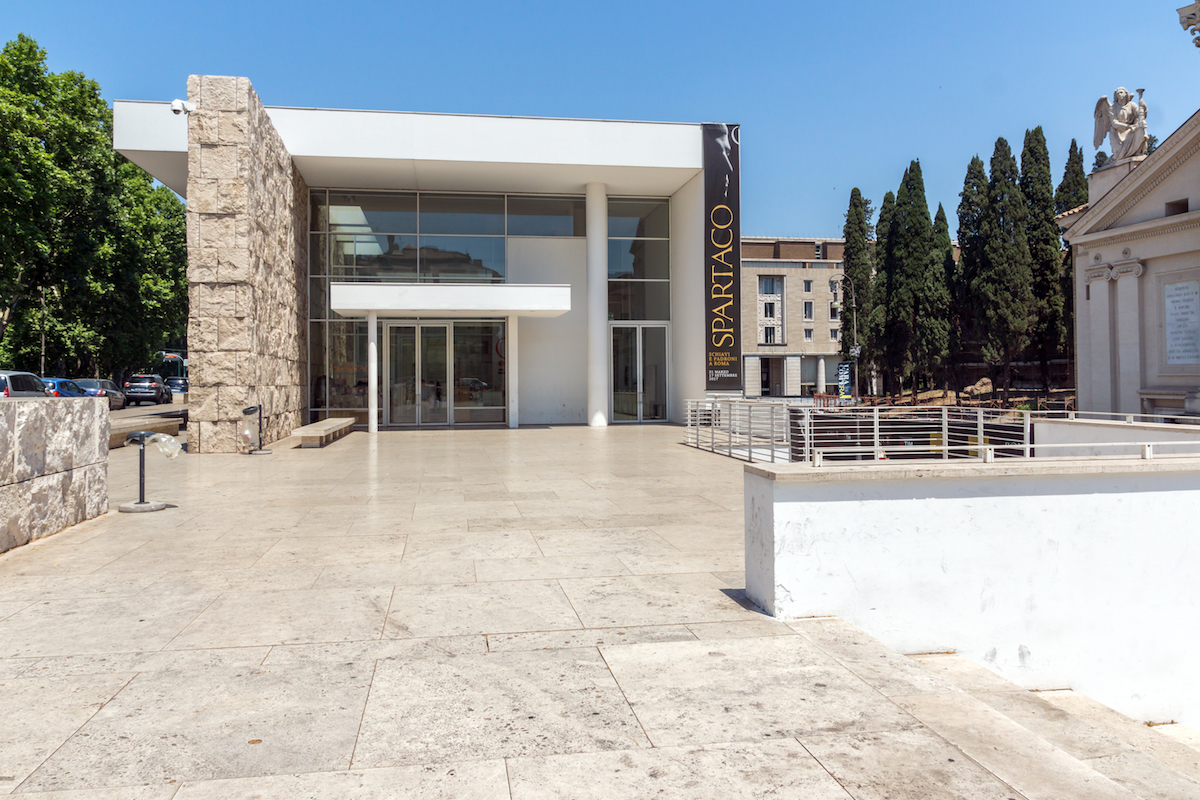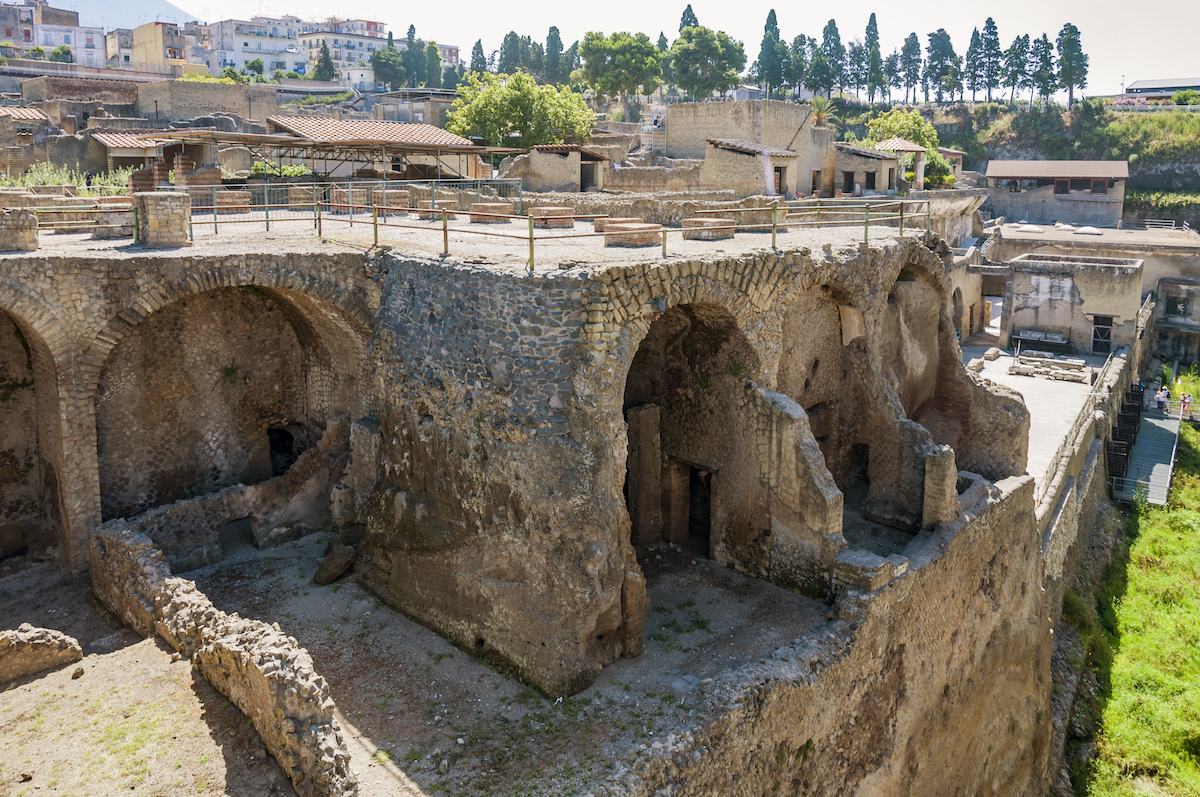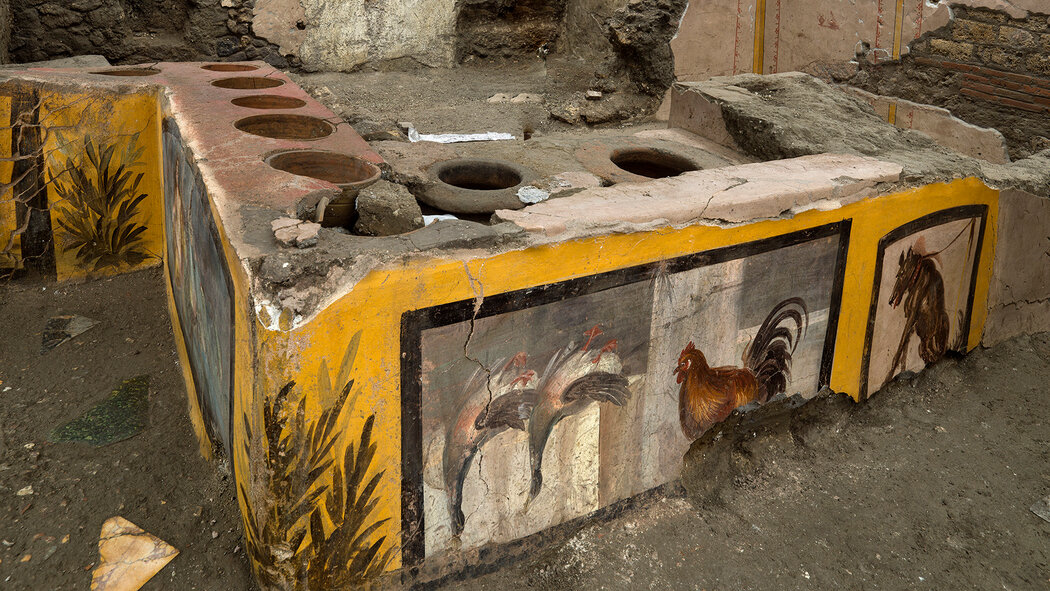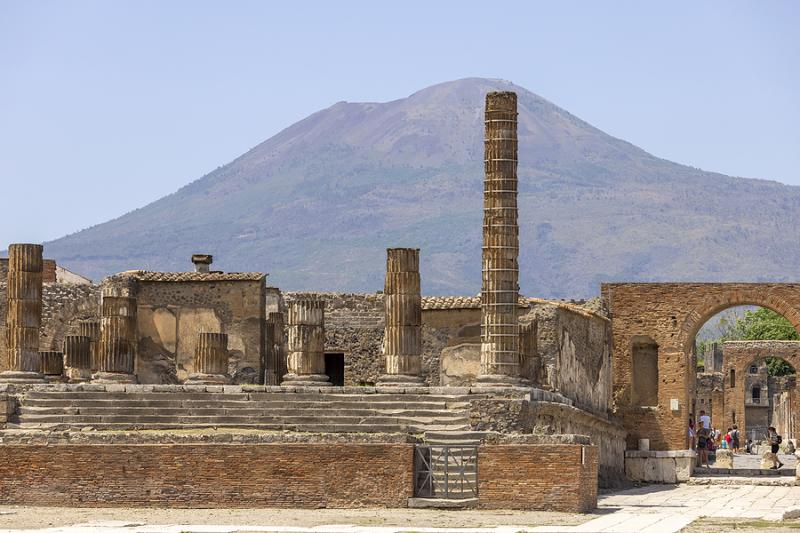2021 was an exciting ‘archeological year’ in Italy, with many finds that helped shed light on the country’s ancient history. We have selected a few that particularly stood out, from a statue menhir found in Tuscany to an ancient Roman boundary stone, to the never-ending discoveries that continue to amaze archaeologists at Pompeii, where excavation work is ongoing; at Pompeii's overshadowed neighbor, Herculaneum, two-and-a-half year excavations at the ancient beach have revealed the remains of a man trying to escape the destructive Mount Vesuvius eruption in 79 AD.
Read on for the most significant archaeological discoveries of 2021 in Italy.
Rare 2,000-year-old boundary stone in Rome

A rare pomerium cippus, an engraved travertine stone used to mark the outer limits of ancient Rome, resurfaced in the summer of 2021 during redevelopment work in Piazza Augusto Imperatore, where the Mausoleum of Augustus is located.
Thanks to the inscription, the stone can be traced back to 49 AD, when the emperor Claudius redrew and expanded the city’s outer limits. The inscription says that Claudius “extended and redefined the pomerium because he had increased the boundaries of the Roman people.” The stone was one of around 140 installed by Claudius to mark Rome’s pomerium, the sacred limit that separated the city (urbs) from external territory (ager); inside the pomerium, construction, farming and fighting were banned.
The discovery was even more exceptional because only ten other boundary stones from the time of Claudius have been found over time and the most recent was discovered more than 100 years ago, in 1909.
Under Claudius, the fourth Roman emperor who ruled from 41 to 54 AD, the Empire underwent its first major expansion since the reign of Augustus. He also extended Rome’s city limits to incorporate the Aventine Hill, one of Rome’s seven hills.
According to legend, Romulus, the founder and first king of Rome, created the city’s first pomerium - and killed his brother Remus when Remus jumped over the ‘border’ in defiance to prove the walls were inadequate against invaders.
The pomerium cippus can now be admired in the Sala Paladino of the Ara Pacis Museum, where the cast of the statue of emperor Claudius is also on display.
Head of a statue menhir in Tuscany’s Lunigiana
In March 2021, Lunigiana, the historic strip of land wedged between northern Tuscany and Liguria, revealed an extraordinary archaeological find: the head of a statue menhir. The discovery took place in the village of Pontremoli, near Mount Galletto, when a local resident noticed a rock with a bizarre shape, discarded by a farmer on the edge of a vegetable garden together with a pile of stones he had removed while preparing the land for plowing.
Since approximately 80 statues menhir have been unearthed in Lunigiana so far, the man figured it may be another one of those and handed it over to the director of the Museum of Stele Statues in Pontremoli, who identified the work as an authentic find dating back to the Copper Age.
Stele statues, or statues menhir, are rare prehistoric and protohistoric artifacts. Those found in the Lunigiana area were produced by the Apuan Ligurians between the third millennium BC and the sixth century BC. They depict stylized male or female characters, whose gender is identified by the objects they carry (weapons or jewelry).
The head of the statue menhir was found in excellent condition. It has a typical half-moon shape, with the eyes and nose carved in the stone with a U shape; it is a female head, as can be inferred from the stylized earrings.
To see more of these statues menhir from Lunigiana, you can visit the Museo delle Statue Stele Lunigianesi in Pontremoli.
Remains of fugitive man at Herculaneum

The partially mutilated remains of a man fleeing the 79 AD eruption of Mount Vesuvius were found in October 2021, 25 years after the last excavations carried out at Herculaneum, the ancient Roman town near Pompeii with which it shared the same fate.
The fugitive was stopped by a cloud of volcanic ash, magma and gas just steps away from the sea and, perhaps, salvation.
The man is thought to have been between 40 and 45 years old at the time of death. He was found at the base of a high lava stone wall. He was lying with his head back towards the sea and was surrounded by heavy charred wood.
His last moments were terrible, the director of the Herculaneum archaeological park told Italian news agency ANSA. He explained that it was 1 am when the lava reached town, with a temperature of at least 300-400°C, if not more: a boiling cloud that raced towards the sea at a speed of 100 kilometers per hour and so dense that it had no oxygen. It remains unclear why the man was outside and not sheltering like the other citizens gathered in the fishermen's warehouses.
The remains of more than 300 fugitives who had sought shelter while waiting to be rescued by the fleet of Pliny the Elder were in fact found on the beach of Herculaneum during the excavations of the site carried out in the 1980s and ‘90s.
The recent excavations are carried out in conjunction with the preparation of a path that will allow visitors to reach the monumental Villa dei Papiri, so that they can get an idea of what the seafront promenade looked like, the only completely preserved seafront of a Roman city.
Pompeii

Of the many discoveries that continue to be unearthed in Pompeii, here are three of the most significant from 2021.
An ancient fast food stall
In the ancient Roman city of Pompeii, archeologists discovered in the summer of 2021 a well-preserved ‘thermopolium’, a commercial establishment where, in the ancient Greek-Roman world, it was possible to purchase ready-to-eat food (literally, “a place where (something) hot is sold”).
Unlike modern fast food chains, which all look the same, the 2,000-year-old thermopolium was beautifully decorated with frescoes: two ducks hanging upside down, a rooster, a dog on a leash, a nereid riding a sea-horse. According to researchers, poultry was eaten with wine or hot drinks, therefore the animals depicted were likely butchered and sold at the food shop.
Read more about the discovery in our dedicated article here.
Slave Room
In early November 2021, excavations at Villa di Civita Giuliana, a majestic suburban estate northwest of the ancient site, revealed a small bedroom for slaves, perfectly preserved.
This discovery was even more exceptional than usual because it provided details about the living conditions of the poorest class.
“It offers an extraordinary glimpse into a part of the ancient world that usually remains largely in the dark. The room grants us a rare insight into the daily reality of slaves,” the Pompeii archeological site wrote on its Instagram account at the time of the discovery.
The slaves' living quarters, probably a storage area, contain three wooden beds - two for adults, one for a child - a chamber pot next to the beds, a wooden chest filled with metal and fabric items, large stacked amphorae, and a chariot shaft that may have been prepared by the slave family who likely carried out domestic chores at Civita Giuliana.
Read more about the slave room in our dedicated article here.
A four-wheeled processional chariot
In March 2021, excavations at Civita Giuliana revealed a nearly-intact chariot. Drawn by four horses, the chariot was used for triumphal processions. The wooden vehicle is so well preserved that it shows imprints of the ropes that had been part of the horses’ harnesses, as well as its rich decorations, such as embossed relief figures and painted scenes. It is the first chariot of its kind to have been found in Italy: a ceremonial chariot “not for everyday use or for agricultural transport, but to accompany community festivities, parades and processions,” as described on the Pompeii’s website.












